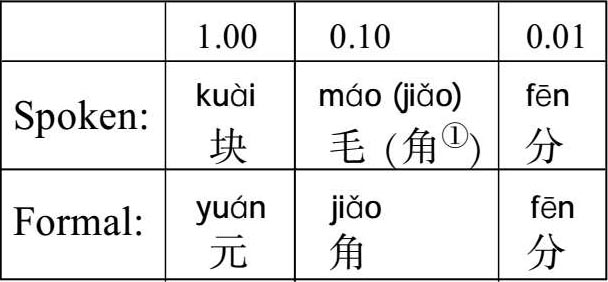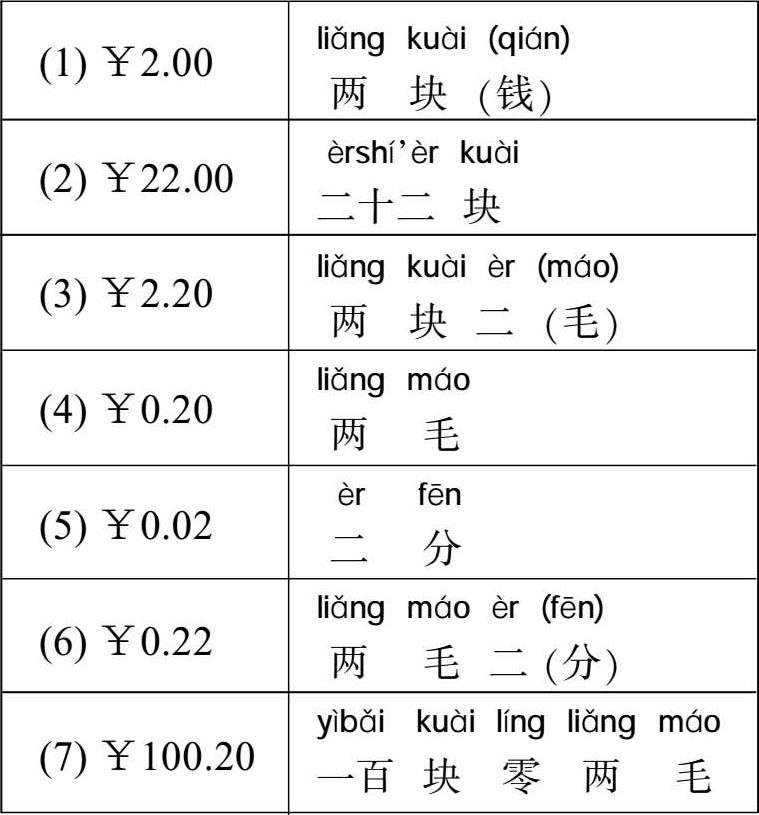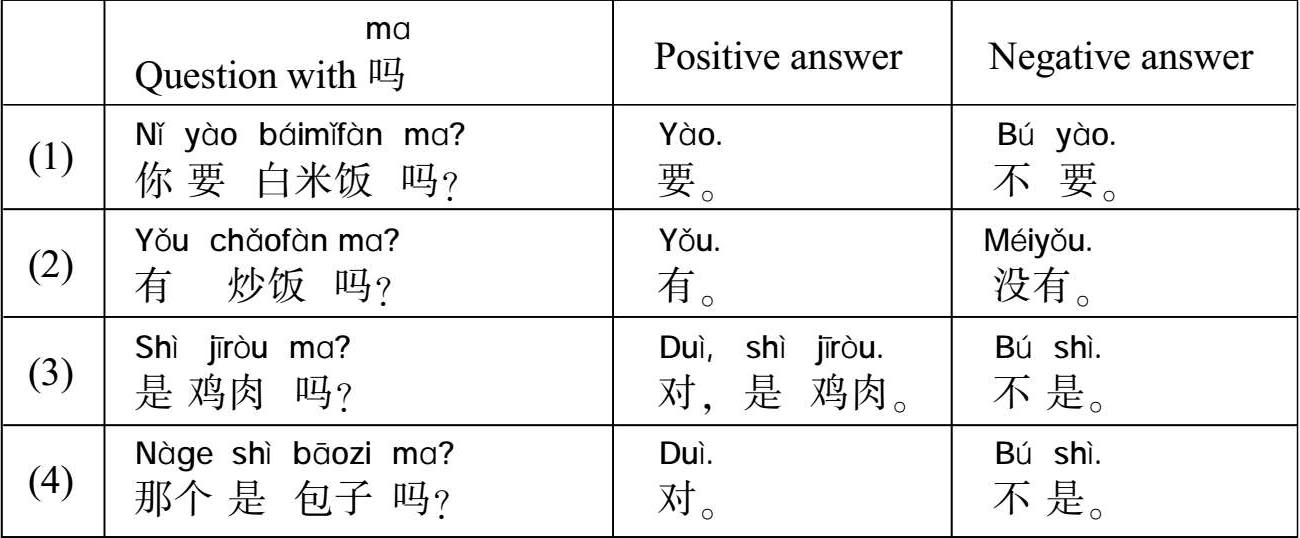




Numbers 0-100

Denominations of money

①Some people,especially those in southern China,prefer using 角 to 毛 .
How to read price

 Can you summarize when
二
is used andwhen
两
is used when you read price?
(小 结“二”和“两”的用法)
Can you summarize when
二
is used andwhen
两
is used when you read price?
(小 结“二”和“两”的用法)
Write your summary here :(把你的总结写在这里)

We have learnedthat adverb 也 appears before the verb in a sentence(see Unit 1).Thisunit gives us more examples ofadverbs: 还 、 不 、 没 、 只 .(第一课学了副词“也”,本课再 学几个 副 词 :还、不、没、只)
(1) 还 要 什 么 ?
(2) 马 克 不 要 白 米 饭 。
(3) 马 克 不 喜 欢 吃 食 堂 的 饭 。
(4) 食 堂 只 有 白 米 饭 和 包 子 , 没 有 炒 饭 , 也 没 有 炒 面 。
 Do these adverbs also appear before verbs?
(这些副词也出现在动词前吗?)
Do these adverbs also appear before verbs?
(这些副词也出现在动词前吗?)
 When both
也
and
没
are before the verb
(
see Sentence 4
)
,which adverb is closer to
the verb?
(当“也”和“没”同时出现在动词前〔见句4〕,哪个副词离动词更近?)
When both
也
and
没
are before the verb
(
see Sentence 4
)
,which adverb is closer to
the verb?
(当“也”和“没”同时出现在动词前〔见句4〕,哪个副词离动词更近?)
We have learned question with a question word in Unit 1. In this unit,we learn simple question. Add a question particle 吗 to a statement and it becomes a simple question.
(陈述句后加“吗”就变成简单问句)

 Can you find the rule of how to answer a question with
吗
?(如何回答简单问句?)
Can you find the rule of how to answer a question with
吗
?(如何回答简单问句?)
Write your findings here: (把你的发现写在这里)

 Please change the four questions with
吗
above into questions with question word.
Please change the four questions with
吗
above into questions with question word.
(用疑问词改写上表中的四句简单问句)

Unlike in English,a numeral in Chinese is usually not immediately followed by a noun.
A measure word is used in between.So the structure is:
 .
.
(与英语不同,汉语中数词不能直接用在名词之前,中间需加量词才行。其结构形式为:
 )
)
Commonly used measure words are less than twenty(See Appendix 1). 个 is by far the most common measure word in Chinese and is used with a whole range of nouns which do not have their own specific measure words.Let's see some examples of 个 :(常用量词不超过 20个〔见附录1〕,“个”是最常用的量 词 )
一 个 名 字 两 个 包 子 三 个 学 生 一 百 个 国 家
Measure wordis not only used after a numeral,but also after a question word.(量词不仅可以用在数词后,也可以用在疑问词后)
e.g. 几 个 多 少 个